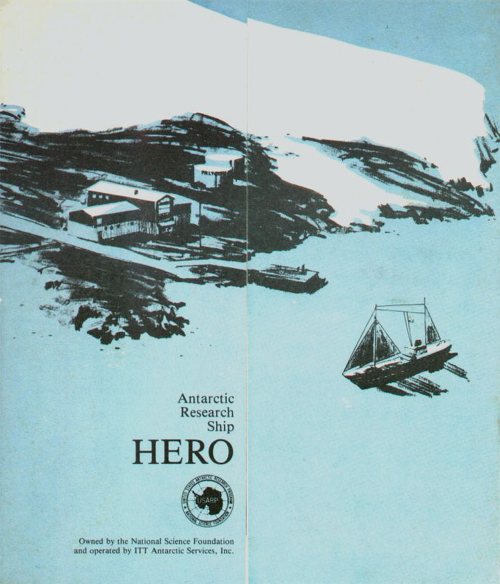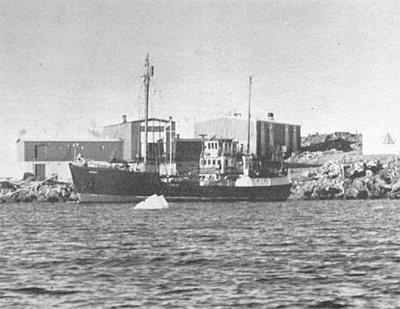|
Dedicated to support of science and international cooperation in the Southern Ocean, the Antarctic research ship Hero is an important part of the United States Antarctic Research Program of the National Science Foundation.
She is the namesake of a 30-foot American sailing sloop [sic; see my footnote, the length of Palmer's sloop was 47 feet--Bill] captained by Nathaniel B. Palmer, who in 1820 became one of the first to view the Antarctic mainland. This modern Hero was built to serve as a mobile platform for the conduct of research in Antarctic Peninsula waters, augmenting the facilities of the U. S. Palmer Station on Anvers Island. The Hero is a diesel-powered but sail-equipped wooden ship. Wood provides resiliency in sea ice and acoustic quiet. Sails assure steadiness, safety, and, again, silence. Her oak hull is sheathed in tough South American greenheart to protect against abrasion by floating ice. Six scientists and a crew of 12 comprise Hero's normal complement which for special cruises may be increased by 2 shipboard investigators or 7 transient personnel. Designed primarily for trawling and other biological collecting, Hero has 2 laboratories to support such diverse activities as physical oceanography, bioacoustic studies, onshore geology, and biological investigations. The Hero's areas of operation from the spring to the fall are the often stormy waters of the Antarctic Peninsula and the Scotia Sea. She operates out of South American ports during the wintertime when long hours of darkness and heavy ice keep her out of sub-Antarctic waters. Hero was designed by Potter & M'Arthur, Inc., naval architects of Boston, Massachusetts, and constructed by Harvey F. Gamage, Shipbuilder, Inc., South Bristol, Maine. The National Science Foundation is the agency of the U. S. Government responsible for the coordination and management of the United States Antarctic Research Program. USARP comprises investigations conducted by university and government scientists and other researchers at stations on the Antarctic continent and aboard vessels on the surrounding oceans. Hero's home port, Palmer Station, like the other U. S. Antarctic stations, is maintained by the U. S. Naval Support Force, Antarctica. [This brochure was published by ITT/ANS for NSF in the early 80's; the text was in English and Spanish. For clarity I have retyped the English text and roughly arranged the document as it was originally presented. The brochure (which is no longer in my possession) stated that "she is the namesake of [Palmer's] 30-foot sloop...." That 30-foot length is a direct quote from this May-June 1968 Antarctic Journal article. This Wikipedia article describes the length of Palmer's sloop as 47 feet. The statement in the last paragraph: "Palmer Station...is maintained by the U. S. Naval Support Force, Antarctica" may be an artifact from an earlier document, as the station was staffed by a civilian crew beginning in the 1973-74 season. Some logistical support was still furnished by the Navy as well as the Coast Guard. The photos are undated. Thanks to Jim Mortier for lending me the brochure. -Bill] Next, the last cruise of Hero. |



